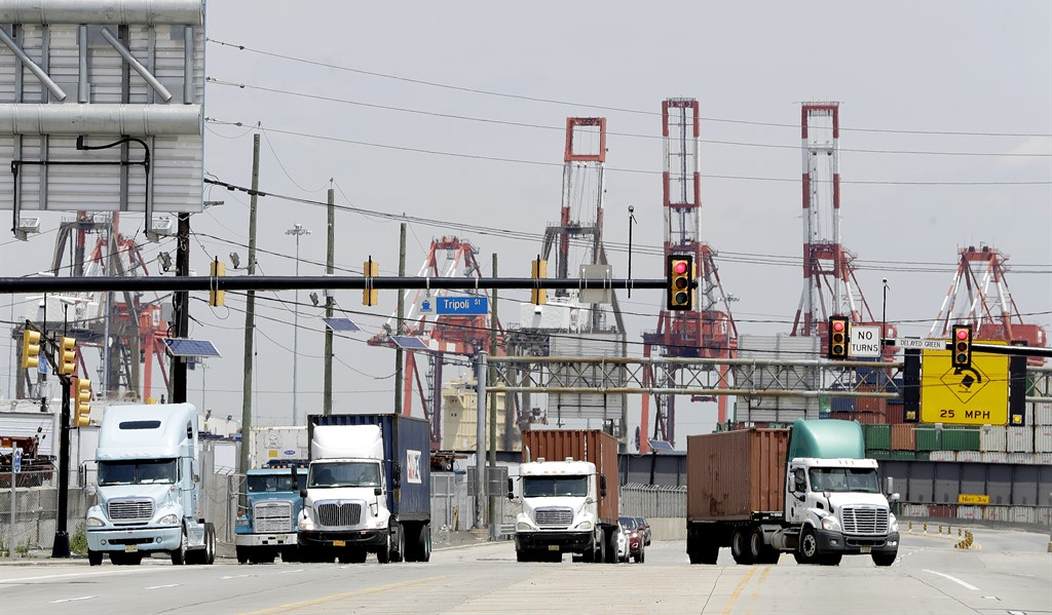The Biden administration on Friday handed down the toughest regulations to date limiting emissions on more than 100 types of heavy-duty vehicles, including buses, freight trucks, garbage trucks, and commercial vans.
The rule, which was issued Friday by the Environmental Protection Agency, places progressive restrictions on these vehicles beginning for model year 2027 through 2032. It is similar to a rule issued last week for new passenger vehicles and light trucks.
“I’m so proud to announce that EPA is finalizing the strongest national greenhouse gas standards for heavy-duty vehicles in history,” said Environmental Protection Agency administrator Michael Regan.
"In finalizing these emissions standards for heavy-duty vehicles like trucks and buses, EPA is significantly cutting pollution from the hardest-working vehicles on the road," Regan added. "Building on our recently finalized rule for light- and medium-duty vehicles, EPA’s strong and durable vehicle standards respond to the urgency of the climate crisis by making deep cuts in emissions from the transportation sector."
I’m proud to announce @EPA has finalized the strongest national standards for heavy-duty vehicles – avoiding 1 billion tons of harmful air pollution & protecting 72 million people living near truck freight routes. This is @POTUS' climate agenda at work. 👍🏾 https://t.co/rLTtLKo16f
— Michael Regan, U.S. EPA (@EPAMichaelRegan) March 29, 2024
Recommended
The rule is technology-neutral, meaning vehicle manufacturers can meet the standards how they choose: advanced internal combustion engine vehicles, hybrid vehicles, plug-in hybrid electric vehicles, battery electric vehicles and hydrogen fuel cell vehicles.
However, the rule won’t necessarily mean there will be many more electric heavy-duty trucks on the roads in the coming years. By the early 2030s, EPA modeling predicts between 12-25% of the biggest freight trucks on the road will be zero-emissions vehicles. For smaller classes, like beverage or dump trucks, it could be closer to 40%.
Like its light-duty counterpart, the new standards will be phased in gradually, giving vehicle manufacturers flexibility and allowing more time for clean fuel infrastructure to get up and running. The standards will ramp up more stringently after 2030. (CNN)
Some in the trucking industry have spoken out against the crackdown on diesel engines, noting that the infrastructure is currently inadequate given these heavy-duty vehicles often need to travel long distances and carry heavy loads. Additionally, the cost of new vehicles that meet these standards has also been a major concern.
Given the wide range of operations required of our industry to keep the economy running, a successful emission regulation must be technology neutral and cannot be one-size-fits-all.
— American Trucking (@TRUCKINGdotORG) March 29, 2024
Our industry has a proud pedigree and commitment to a clean environment. Tailpipe emissions have been reduced by 98.5% over the past four decades, equating to 60 trucks today emitting what one truck emitted in 1988.
— American Trucking (@TRUCKINGdotORG) March 29, 2024
While we are disappointed with today’s rule, we will continue to work with EPA to address its shortcomings and advance emission-reduction targets and timelines that are both realistic and durable, and that account for the operational realities of our industry.
— American Trucking (@TRUCKINGdotORG) March 29, 2024
"People have no idea that our entire economy rides on a diesel-powered trucking industry," commented the US Oil and Gas Association. "An election-year truckers strike would educate them real quick..."


















Join the conversation as a VIP Member